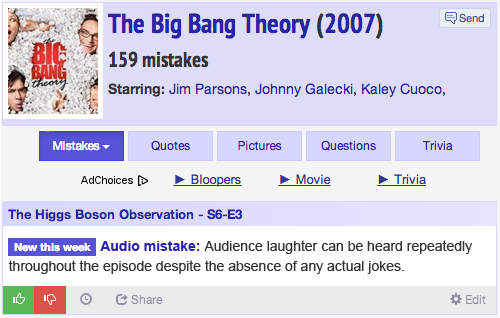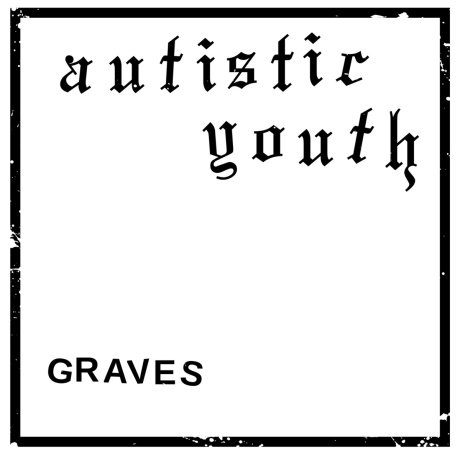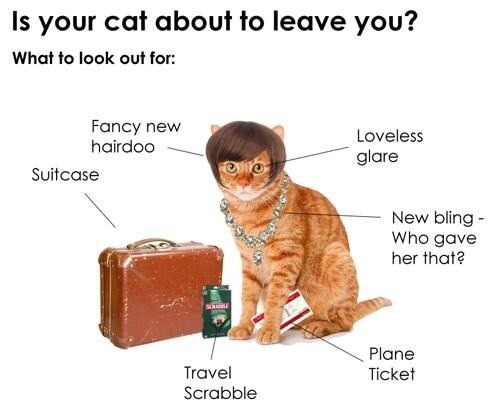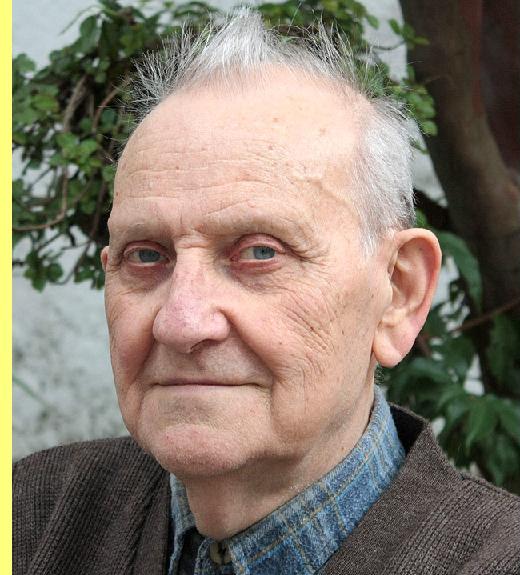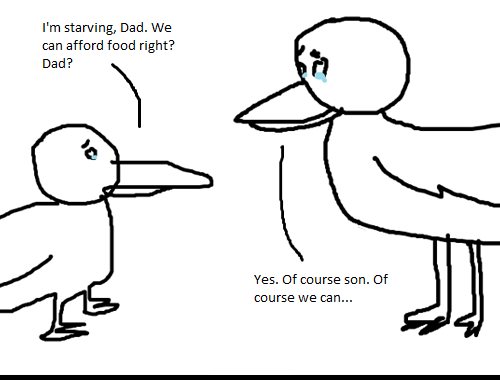
Question: What creates a ghost town? Answer: Rapid population, rapid depopulation. Ghost towns are the residue of booms and busts, expectations of substantial monetary gain that for whatever reason failed to materialize. Wherever resources can be exploited and depleted, there you will find, at some point, ghost towns. In the United States...
Poneteo
Shared posts
‘The Sands of Time’: Incredible photos from an African ghost town
Flooding in Britain

Brilliant ‘Doonesbury’ TV special from 1977 questions the high-minded ideals of the 1960s

In 1977 NBC aired A Doonesbury Special, a short film produced by John and Faith Hubley—a couple of married animators probably best known for their work on The Electric Company—based on Garry Trudeau’s popular “Doonesbury” comic strip.
The Academy Award-nominated animation (it won a Special Jury Award at Cannes...
What To Listen To In Order To Have Advanced ‘Old School’ Tastes In 2014

Having now been aware of and in some manner or another participated in The Scene for close to a decade and a half, I’ve observed that within the decade or so it takes for trends to change, each year within a decade can be classified in one of three ways: Either it is an incubation year, in which The Next Big Thing hasn’t quite come along yet, but the elements are either already there or developing and just haven’t caught on yet (ie: In 2000, I saw scene hair well before scene became a national trend, via 18 Visions fandom), a breakthrough year, in which The Next Big Thing really “arrives” so to speak (ie: 2010 saw the release of The Wonder Years’ “Upsides” and Man Overboard’s “Real Talk”, ushering in the age of tr00 pop punk (followed shortly after by major albums from The Story So Far and Title Fight in 2011)), or a reinforcement year, in which the major trend of the decade has already arrived, and the year serves to further reinforce or expand upon the established trend (ie: 2001 was ‘the year emo broke’ in the public’s eye, so to speak, and by 2004? Well, emo is still big, there are just more bands and a wider awareness for it).
2014 is definitely shaping up to be a reinforcement year, and as such, we can most likely expect to see little change and more of a continuation and extrapolation of the kind of stuff we have been talking about for roughly three years, now. As an example in terms of continuing trends, we see that the 90s still have a stranglehold on the tastes of the average hardcore kid: At a show I went to the other day, I saw plenty of Life Of Agony and Crowbar shirts, and suburbanites were all about “street tough” bands (I saw a 15 year old wearing a Cold As Life shirt, and was no lack of love in terms of musical and merch representation of 90s NYHC elsewhere).
But, for once, I am not here to talk to you about the history of some stupid old bands nobody should but for some reason may give a shit about. Actually, JK, of course I’m going to talk to you about some stupid old bands nobody should but for some reason do give a shit about! But this isn’t going to be another one of my perhaps too well worn “young ppl like old stuff like [x] band this is why I think they do that” posts. Not everyone is necessarily aware of this, but I am actually fairly good at predicting certain trends myself (source: I listened to Mineral in 2003 way before it was cool to start jocking them again), and the purpose of this article will be to identify which old bands you should start listening to NOW (relative to the current trends of late 2013/early 2014) in order to achieve a very advanced level of “old school credibility” by the time 2016 rolls around.
I will warn you right off the bat: jocking the bands I am going to present to you below WILL seem like a risky move in the present, and there is little doubt people will call you a poser for actively repping them now. However, Galileo was also called a fool in his time, but who had the last laugh? If you keep an open mind and are willing to have your advertised musical preferences met with hostility and indifference from certain 19 year olds on the internet, getting onboard with these bands now may potentially pay huge credibility dividends in the not-too-distant future.
NU GRUNGE
DON’T LISTEN TO THIS:
It was bound to happen, but I am still nonetheless sorry to report that as of 2013, nu grunge is definitely a thing and bands such as Title Fight are riding the wave of bigmuff revivalism straight to the crest of Tumblr fame. That said, it you really want to be ahead of the pack, don’t take the easy way out by wasting your time declaring to the world that you listen to entry-level poser fodder such as Nirvana! Don’t get me wrong, they are a great band, but nu grungers who rep Nirvana super hard are kind of like those “classic punk” guys from the early 2000s who wanted to show all the Good Charlotte-loving weenies on the internet what was up by creating Listmanias on Amazon (remember those?) that said “Want to listen to some REAL punk???” but then the list would just be a bunch of super obvious shit like The Ramones and The Sex Pistols and other stuff that any idiot who is even vaguely aware of punk would already know about. Don’t be that guy! Instead:
LISTEN TO THIS:
Mark my words: The days are not long upon us when Creed will be old enough for The Kids to accept them as a ‘clasic late 90s hard rock band’. The early adopters will of course have to be a little cloying about it, repping them semi-ironically while obviously letting the influence show in their music, but it won’t be long before Creed, the ultimate uncool band (besides maybe Nickelback, who will likely receive similar treatment), becomes the de jour band to rip off. And why not? They actually have written some great singles, and once post-grunge becomes old enough to acceptably enjoy, The Kids will most likely be all over this band.
“REAL” HARDCORE:
DON’T LISTEN TO THIS:
Again, like Nirvana, I’m not telling you not to listen to Madball because they are a bad band. Obviously, they are great – indisputably one of the most important and influential groups of modern hardcore, and anyone who disagrees is a poser baby who needs to go back to hardcore toddler school for dumb people. That said, anyone involved with “real hardcore” these days knows this, and you aren’t fooling anyone with your “old school tastes” – you are simply being late to the party. Being “street” is cool to little tr00 hardcore kids right now (as long as they don’t actually have to lives the lives of the old bands they imitate), but to truly be ahead of the pack, you have to think about where trends will be a few years from now. And since the late 90s/early 2000s worship is on the horizon…
LISTEN TO THIS:
I have a slightly weird music fan relationship with 18 Visions, because I really hated them back when they were around because all the popular, good-looking kids at my school repped them super hard and dressed like them (srs), and I was a little punk rock asshole. So while those kids were pulling all the super hot girls, participating in sports, and generally making the most of their high school experience, I was hanging out in some dank, isolated corner of the lunch area trying to get one of my mean spirited punk friends to actually pay attention to me as I told them about how I thought I saw Duane Peters at the skatepark as they sold each other pot over the lunch table. Poor social choices on my part aside, I considered 18V the ultimate “trendy” band and thus didn’t give them a chance until after I had already left California and they were long gone. Well, it turns out I was goofing hard because they truly were trend setters (in terms of both music and fashion), and they still hold up well today. It is unfortunate that they were so ahead of their time back when nobody (outside of California) seemed to give a shit, but now is the time is right to start jocking them again, since they are old, the music is really good, and the whole “tortured artist/glamor kills” thing is going to become cool again in the latter part of the decade once teenage suburbanites grow out of their faux street hustle phase.
POP PUNK
DON’T LISTEN TO THIS:
Pop punk has become such a big thing at this point that some of The Kids may feel compelled to “really get back to their roots” by moving back past the early 2000s worship of Blink, NFG, and Green Day, and explore some more “classic” pop punk stuff like NOFX. Here’s the problem with that: NOFX were definitely always punk as fuck, but they were only considered pop punk because snobby kids wanted to differentiate them from “real” punk bands [read: bands who were older and sold more poorly], and somehow the label stuck. Well, now that they have been a band for like, 30 years, stupid gross trupunx have finally decided to come around and embrace them, so now they are only really current with old people and fat beardo punk slobs. Since my alignment is lawful good/pop punk, I feel compelled to warn the pop punk youth of today that you have no business going down that rabbit hole – if you are under the age of 25, nothing awaits you there but greasy hair, battle jackets, and utterly dysfunctional females (if any are present and single). Stay pizza, stay posi, stay pop punk.
LISTEN TO THIS:
While I guess the term “emo” isn’t exactly the four letter word it once was (there are now bands self-identifying as emo, which is really fucking weird having lived through an era where it was the one label no band wanted to have), some of the catchier/better emo bands are now being rebranded by their fans as “pop punk” – ostensibly for the purposes of simultaneously affirming their influence within modern pop punk while at the same time claiming a sense of direct lineage between pop punk and emo where none previously existed. Two of the more obvious examples of this phenomena are Jimmy Eat World and Saves The Day, yet for some reason I have yet to hear any newer pop punk bands talking about The Get-Up Kids. This is a little puzzling to me because Something To Write Home About is a bone fide classic of upbeat emo/power pop [read: proto modern pop punk], and the fact that it so perfectly fits the aesthetics of tr00 pop punk (fun, angsty songs about hanging out with your friends, break ups, and romantic tunes that have tumblr-worthy lyrics) suggests that it will likely only be a matter of time before pop punk kids start worshipping this band. Get in on the action now while the stock in this band is low – if pop punk survives to 2019 (and God help us, it will), you will cash in big on the 20th anniversary tour of STWHA!
NEO EMO
DON’T LISTEN TO THIS:
While neo emo is originally an offshoot of modern pop punk, the number of bands emerging that are completely divorced from pop punk in terms of music and aesthetics is reaching a critical level to the point by which the subsubsubgenre will likely be its own entity entirely by about 2016. An awful lot of bands are either talking about American Football or writing music that sounds exactly like them, and such is a perfect example of a marginal band that nobody really cared about back when they existed suddenly become “classic/cult” status. That said, if think you are showing the world how classic your emo tastes are in 2014 by jocking this band, think again – all you are really showing them is that you may have accidentally heard 20 seconds of any Real Friends song at one point or another. Not very impressive.
LISTEN TO THIS:
People who listen to ‘real emo’ usually start with punk, and they become bigger and bigger pussies as they ‘mature’, so they tend to move from punk/hardcore to emo, emo to indie, and then at that point there are a number of different directions they can go towards, but none of them are very pretty (RETURN to punk/hardcore as an older person with some amount of accumulated regret, go Americana, folk, etc). Listening to Desperacidos now gives you the jump on a lot of your neo-emo peers for a few reasons: 1) they are the last gasp of a “true emo” stalwart (Bright Eyes’ Connor O’Burst) right before he went full indie, and 2) they are not currently popular or appreciated amongst young people, so you can say you were listening to them for the second time first, and 3) they are sadder than the average emo band, giving you a leg up on the ‘maturity’ of your tastes (rather than the typical “girl u broke up with me and now I have all these feels” sentiments, these lyrics are about a marriage falling apart amid a blur of desperation and resentment. Ouch.).
Metalcore
DON’T LISTEN TO THIS:
It is weird enough remembering when many of the “classic” metalcore bands where at their peak popularity, taking note as they dropped off and became irrelevant, and then subsequently rose back up to being to being jocked again by a new crop of teenagers, but the idea of tr00 metalcore seemed downright silly to me until I saw direct evidence of children making that distinction on this very website. As such, I feel compelled to say something about that phenomenon here. Tr00 metalcore kids, take note: Listening to Converge is about the lowest hanging fruit you can grab for if you are trying to establish your tr00 credibility amongst other little kids who listen to “real” metalcore. Think about it: they are the highest profile, longest lasting band playing that style of music, and when we are honest with ourselves, they are pretty cheesy (in an unfun, embarrassing way). Like, this song is about someone breaking edge ffs. Seriously.
LISTEN TO THIS:
If you going to insist on being an old school metalcore elitist, the least you can do is put effort in digging up an old band to jock that doesn’t have 186,000 likes on Facebook. The good news is that there is plenty of old metalcore out there from 1997 – 2000 that hardly anybody out there gives a shit about! Codeseven is just one example, but Hopesfall, Walls Of Jericho, and Cave In are all good choices as well. IMPORTANT NOTE: For some reason, a lot of these bands went “space rock” or whatever later in their careers, so make sure you are always trying to find their oldest recordings, and tell your friends you only like their first couple of albums.
SKRAMZ:
DON’T LISTEN TO THIS:
My general advise when it comes to listening to skramz is “don’t”, but if you must listen to wet blanket white boy wah-wah music, just assume the “big” (lol) classic bands are all spoken for and don’t bother mentioning anything about them to your skramz bretheren (don’t even reblog stuff about them!). Of course, I’m preaching to the choir here because if like skramz that much in the first place you probably already assume bands like Saetia, Jerome’s Dream, or whatever are obvious bands that only entry level pose hoes listen to.
LISTEN TO THIS:
Given that Hot Cross consists of a couple members of Saetia, I don’t think this is too tall of an order for even the most hardened skramz elitist, but if you are looking for another set of bands to jock, I suggest mid 2000s skronkcore. Hot Cross is probably the most listenable out of the bunch, but you could just as easily go for something zanier like Ultradolphins or The Locust instead. Circa 2014 99.9999% of the population does not care about these bands, they have albums on vinyl, and they are utterly unlistenable to just about any desirable female – what more could a skramz fan ask for?
Recordcollectorcorecore
DON’T LISTEN TO THIS:
Once again, it pains me to put this band on the “don’t listen to this” list, because even though it sounds like it was recorded in a shed with microphones duct taped to the ceiling, this Negative Approach song makes me want to jump up and punch the nearest living things in the face (sorry cats). Unfortunately, it’s almost 2014 and let’s be real: 80s revivalcore is pretty much dead and The Kids are already moving towards the late 80s (youth crew, super early powerviolence, etc). You could follow the herd and FINALLY get into Sick Of It All’s first album, or you can be a true pioneer in recordcollectorcorecore and bravely venture into uncharted territory…
f you think Antidote is heavy, you will be floored when you hear the fresh, exciting sounds of Madball circa 1994! Your friends will incessantly heckle you in the present for liking that “jock bullshit”, but the joke will be on them when you reveal yourself to be a truly advanced tastemaker, capable of liking music two and a half decades old one half of a decade early. While recordcollectorcorecore in general is pretty depressing territory, the good news is that the future of this scene is actually pretty bright: You know kids are just going to flip when they start listening to Terror in another eight to ten years!

Hopefully, no matter which of the above subgenres you align yourself with, this guide will help provide you with some sense of what to listen to in order to be ahead of the curve in 2014. I can’t promise you instant acknowledgement of your advanced tastes, nor will you find many compatriots at shows or on Tumblr in the present, but such is the path of the trailblazer. Then again, one can argue that being into punk, hardcore, and the various mutations thereof was never about being trendy or just going with the flow of the times anyway – really, it’s about being able to say “I told you so” to everyone else who jumps on the same bandwagon shortly after you do.
DISCUSSION: How accurate do you think these taste predictions will be for 2016 -2018? Who do YOU think The Kids should start listening to now to be ahead of the curve? Will The Get-Up Kids ever get their due amongst pop punk kids? Which of the above subgenres has the least amount of longevity? Will you put your post-neo pop punk nu grunge credibility on the line by listening to Creed now?
Mastering Autistic Youth and European Tour
Mastering Autistic Youth‘s “Graves” 7″ on Taken By Surprise and Sabotage Records.
The record is to coincide with an European Tour to support their new LP “Nonage”.
“Hot on the heels of their NONAGE LP, here’s a track off the upcoming GRAVES 7″ for the AUTISTIC YOUTH European Tour 2014! The band will have a tour version with them, the regular edition won’t be available until after the tour, official release date is February 24, so check the dates below and go out and see them!”
AUTISTIC YOUTH EUROPEAN TOUR 2014
Mi. 29.01.2014 Zaragoza (tbc)
Do. 30.01.2014 Madrid – Rock Palace
Fr. 31.01.2014 Lasarte – tba
Sa. 01.02.2014 Bordeaux – L’Antidote
So. 02.02.2014 Paris – La Mecanique Ondulatoire
Mo. 03.02.2014 Lille – Le Monks
Di. 04.02.2014 Amsterdam – Occii
Mi. 05.02.2014 Münster – Baracke
Do. 06.02.2014 Bremen – Sielwallhaus
Fr. 07.02.2014 Aalborg – 1000 Fryd
Sa. 08.02.2014 Copenhagen – Dödsmaskinen
So. 09.02.2014 Kiel – Hansa 48
Mo. 10.02.2014 Hamburg – Hafenklang
Di. 11.02.2014 Berlin – Cortina Bob
Mi. 12.02.2014 Leipzig – Zoro
Do. 13.02.2014 Wroclaw – Pod Palacykiem (+ Catholic Guilt)
Fr. 14.02.2014 Brno – Vegalite (+ Catholic Guilt)
Sa. 15.02.2014 Budapest – Trafik Klub (+ Catholic Guilt)
So. 16.02.2014 Zagreb – Attack (+ Catholic Guilt)
Mo. 17.02.2014 Munich – Kafe Kult
Di. 18.02.2014 Bologna – Freakout Club
Mi. 19.02.2014 Lyon – Le Kajibe
Do. 20.02.2014 Toulouse – La Dernière Chance
Fr. 21.02.2014 Sant Feliu de Guíxols – Atzavara
Sa. 22.02.2014 Barcelona – tba
Filed under: Mastering, Tour Tagged: 1000 Fryd, Attack, Atzavara, Autistic Youth, Baracke, Catholic Guilt, Cortina Bob, Dödsmaskinen, Freakout Club, Hafenklang, Hansa 48, Kafe Kult, La Dernière Chance, La Mecanique Ondulatoire, L’Antidote, Le Kajibe, Le Monks, OCCII, Pod Palacykiem, Rock Palace, sabotage records, Sielwallhaus, Taken By Surprise Records, Trafik Klub, Vegalite, Zoro
Change Becomes Them: Post-punk legends Wire return to the concert stage, 1985

Art rock gods Wire were inactive between 1981 and 1985 due to solo outings and other projects. When they reformed, the sound of Wire 2.0 moved away from their earlier harder-edged material towards more electronic instrumentation and experimentation.
The band had moved on and announced that they would play none of the older songs live, hilariously opting instead to hire a Wire tribute band called The Ex-Lion Tamers—their name taken from one of Pink Flag‘s song titles—to open their American tour playing tunes from their first few albums.
You have to love that. What other band save for Wire would do such a thing?
Wire live at the Bloomsbury Theatre, London on Sunday July 21, 1985. This is, I’m pretty sure, the first gig of their return.
Set list: “Drill,” “Serious Of Snakes,” “Ambulance Chasers,” “Harry,” “Madman’s Honey,” “Come Back In Two Halves,” “Kidney Bingos,” “Up To The Sun,” “Drill.”
A fronteira chinesa entre a Rússia e a Coréia do Norte

Ian Teh viaja várias vezes 1000 km através de cidades pequenas e pólos industriais na China, para criar a série foto-jornalística China: Undercurrents.
A combinação das imagens sociais, ambientais e políticas, fornecem um vislumbre de outro mundo. Podemos ver a agitação dos mercados chineses que atendem turistas e empresários russos, e a calma mortal das pequenas cidades chinesas, perto da fronteira norte-coreana.
Esta zona foi concebida para fomentar relacionamentos e o comércios entre esses países vizinhos (Rússia e Coréia do Norte), que antes se consideravam os bastiões do comunismo.
Ian descreve seu trabalho como “, uma exploração das vidas surreais que existem nesses lugares artificiais, zonas económicas especiais que foram criadas pelos mandatos dos governos.”


























Mobilidade urbana como um problema
Ao falarmos em direito à cidade consideramos também as possibilidade de ver o espaço urbano como algo seu, também englobando, portanto, a atuação política para sua transformação. Por Legume Lucas
Como resultado de um encontro de militantes de diversos movimentos sociais, ocorrido em São Paulo em 2012, fui convidado para escrever na revista do Movimento dos Trabalhadores Sem Teto (MTST) sobre transportes e a questão urbana. Por algum motivo o texto nunca foi publicado. Agora, depois de muitos outros frutos mais interessantes daquele encontro, acho interessante divulgá-lo, para pensar, à luz das novas mobilizações, os caminhos discutidos antes de junho
Recentemente temos visto a questão da mobilidade urbana ganhar destaque nas discussões sobre a cidade. Parece existir um amplo consenso sobre a necessidade de permitir a melhor circulação das pessoas, resolvendo os problemas de trânsito caótico, diminuindo o tempo gasto em deslocamentos, ampliando as infraestruturas urbanas. Contudo, se pretendemos discutir mobilidade urbana a sério, é necessário ultrapassar aquele consenso e perceber como as contradições sociais presentes na cidade se expressam nesta temática.
 O enfoque comumente adotado ao se tratar de mobilidade urbana é o caos no trânsito ou, de maneira um pouco mais elaborada, a crise nos transportes, considerando-se como problema básico o tempo gasto com os deslocamentos realizados na cidade. As soluções apontadas para este problema giram em torno de dois eixos: a construção de infraestruturas voltadas para os carros, como avenidas, pontes e viadutos; e maiores investimentos no transporte coletivo, particularmente na expansão da malha metroferroviária e na construção de corredores de ônibus.
O enfoque comumente adotado ao se tratar de mobilidade urbana é o caos no trânsito ou, de maneira um pouco mais elaborada, a crise nos transportes, considerando-se como problema básico o tempo gasto com os deslocamentos realizados na cidade. As soluções apontadas para este problema giram em torno de dois eixos: a construção de infraestruturas voltadas para os carros, como avenidas, pontes e viadutos; e maiores investimentos no transporte coletivo, particularmente na expansão da malha metroferroviária e na construção de corredores de ônibus.
Como os investimentos na circulação de automóveis terão uma seção própria no texto, analisaremos agora os investimentos em transportes coletivos. Estes são feitos com o intuito de garantir que pessoas e mercadorias circulem de maneira mais rápida pela cidade, já que para o empregador não é interessante que um funcionário chegue atrasado ou cansado em seu trabalho, pois assim ele renderá menos. Por outro lado, quanto mais tempo as pessoas gastarem no transporte coletivo menos elas passarão consumindo, implicando em uma menor arrecadação de impostos em todos os âmbitos. Sob a perspectiva dos gastos públicos, há também que se considerar o alto índice de problemas de saúde advindo de nosso modelo de mobilidade, incluindo atropelamentos, doenças respiratórias e stress. Enquanto investimento, a melhoria do transporte coletivo incide na melhor circulação de mercadorias na cidade; em verdade, de uma mercadoria específica, a força de trabalho. A mobilidade urbana seria – deste ponto de vista – a garantia de que o trabalhador efetue seu deslocamento de casa para o trabalho da maneira mais rápida possível. Apesar do estado aparentemente caótico de nosso atual sistema de transporte, é este seu objetivo de fundo. Porém, as mudanças não são fruto da vontade de governantes e empresários.
 Do ponto de vista do trabalhador, o tempo gasto no trânsito é desgastante e cansativo, pois ele é obrigado a enfrentar condições precárias e transportes super-lotados, além de gastar entre duas e cinco horas diárias no deslocamento para o trabalho e não receber por isto, ou seja, trata-se de horas de trabalho não-pago. Estas horas implicam em menos tempo para descansar, se divertir, passar com a família, estudar, enfim, tudo aquilo que na vida não é o trabalho. Desta insatisfação dos usuários e usuárias do transporte coletivo surgem mobilizações populares. Quando o trem para de funcionar e a população toma os trilhos, destrói vagões, bilheterias e catracas, ela está lutando por condições de transporte e também de trabalho, está questionando na prática a opressão cotidiana a que é submetida. Ao fazer isto, está paralisando a produção de mercadorias na cidade. É longa a história de lutas populares envolvendo o transporte coletivo, passando pela Revolta das Barcas em Niterói em 1959, pelos quebra-quebras em todo o país na década de 1980, pelas manifestações contra os aumentos de passagem. Estas mobilizações produziram uma mudança nas políticas públicas voltadas para o transporte, pois não era possível ignorar os problemas vivenciados e questionados pela população. É deste questionamento que se forma a ideia da necessidade de se investir em mobilidade urbana.
Do ponto de vista do trabalhador, o tempo gasto no trânsito é desgastante e cansativo, pois ele é obrigado a enfrentar condições precárias e transportes super-lotados, além de gastar entre duas e cinco horas diárias no deslocamento para o trabalho e não receber por isto, ou seja, trata-se de horas de trabalho não-pago. Estas horas implicam em menos tempo para descansar, se divertir, passar com a família, estudar, enfim, tudo aquilo que na vida não é o trabalho. Desta insatisfação dos usuários e usuárias do transporte coletivo surgem mobilizações populares. Quando o trem para de funcionar e a população toma os trilhos, destrói vagões, bilheterias e catracas, ela está lutando por condições de transporte e também de trabalho, está questionando na prática a opressão cotidiana a que é submetida. Ao fazer isto, está paralisando a produção de mercadorias na cidade. É longa a história de lutas populares envolvendo o transporte coletivo, passando pela Revolta das Barcas em Niterói em 1959, pelos quebra-quebras em todo o país na década de 1980, pelas manifestações contra os aumentos de passagem. Estas mobilizações produziram uma mudança nas políticas públicas voltadas para o transporte, pois não era possível ignorar os problemas vivenciados e questionados pela população. É deste questionamento que se forma a ideia da necessidade de se investir em mobilidade urbana.
A cultura do automóvel
As cidades estão com cada vez mais carros. Cotidianamente somos incentivados a adquiri-los e nunca as condições de empréstimos foram tão facilitadas, constantemente o governo federal promove a redução do Imposto sobre Produtos Industrializados (IPI) para baixar os preços dos automóveis e fomentar o consumo. Ademais, somos estimulados diariamente por propagandas televisivas, impressas ou em sites, que nos informam das diversas vantagens de possuir um automóvel. São promessas de liberdade, prosperidade, velocidade, poder; ao comprar um automóvel teríamos nosso sucesso material, espiritual e sexual garantido. Ele nos possibilita ir e voltar como quisermos, na hora em que desejarmos e com quem escolhermos. Envolvidas em toda esta atmosfera de estímulos materiais e psíquicos, milhares de pessoas compram carros diariamente.
Contudo, estas promessas são frustradas assim que a pessoa sai da concessionária, enfrenta um trânsito caótico, horas de congestionamento, stress. Não existe a tão almejada mobilidade, muito menos a pretendida liberdade. O aumento da frota de veículos carrega também consequências para a cidade. Cada vez mais espaço nas ruas é tomado pelo automóvel; os índices de poluição são altíssimos, implicando em diversas doenças respiratórias; as mortes e os gastos com saúde, decorrentes dos acidentes de trânsito, são altíssimos; além do aumento constante dos tempos de deslocamento das pessoas.
 Porém o fluxo de mercadorias na cidade é cada vez mais intenso. Afinal a produção capitalista sempre precisa se acelerar. Em uma cidade com as ruas engarrafadas são criadas maneiras de garantir esta circulação de mercadorias e entrega delas no prazo determinado. Para isto utilizam-se motoboys, uma categoria extremamente estigmatizada e precarizada, que são obrigados a cumprir prazos de entrega muito curtos, têm uma enorme demanda de trabalho, têm pouquíssimos direitos garantidos, colocam sua vida em risco na cidade e ainda são responsabilizados pelas suas próprias mortes no trânsito.
Porém o fluxo de mercadorias na cidade é cada vez mais intenso. Afinal a produção capitalista sempre precisa se acelerar. Em uma cidade com as ruas engarrafadas são criadas maneiras de garantir esta circulação de mercadorias e entrega delas no prazo determinado. Para isto utilizam-se motoboys, uma categoria extremamente estigmatizada e precarizada, que são obrigados a cumprir prazos de entrega muito curtos, têm uma enorme demanda de trabalho, têm pouquíssimos direitos garantidos, colocam sua vida em risco na cidade e ainda são responsabilizados pelas suas próprias mortes no trânsito.
Apesar dos constantes discursos acerca da priorização dos transportes coletivos, a destinação dos recursos públicos demonstra a continuidade do investimento para a circulação dos automóveis. Segundo recente pesquisa do Instituto de Pesquisa Econômica Aplicada (IPEA), a cada um real investido no transporte coletivo, doze são investidos no transporte individual. As diferentes esferas de governo financiam diretamente a produção de uma mobilidade urbana excludente, centrada na cultura do automóvel em detrimento da valorização do transporte coletivo.
Uma matriz autoritária de investimentos em mobilidade
Contudo, não se pode negar que há novos e constantes investimentos em transporte coletivo, presentes na elaboração de planos de mobilidade, construção de corredores de ônibus, linhas de metrô, trem, monotrilho, entre outros. Como já afirmamos, estas são respostas às mobilizações feitas pelos usuários e usuárias do sistema de transporte. Convém analisar como ocorrem estes investimentos e qual é a cidade construída a partir deles.
Podemos notar que há algumas características em comum entre estes empreendimentos. A primeira delas é o objetivo das obras, ou seja, o desenvolvimento do transporte de massas. A análise feita pelos gestores públicos e privados chegou a conclusão de que é necessário garantir ao trabalhador o rápido deslocamento de casa para o trabalho. Considerando a divisão sócio-espacial das cidades brasileiras, os locais de trabalho estão concentrados nas regiões centrais, enquanto as moradias estão espalhadas pelas periferias; ora, uma vez que os horários de entrada e saída do trabalho são semelhantes, o fluxo no transporte coletivo é muito intenso nos chamados horários de pico. Estruturam-se assim empreendimentos voltados para uma grande capacidade de transporte, muitas pessoas devendo se deslocar rapidamente. Para tanto são construídas vias que permitam o fluxo constante de veículos. Porém estas linhas expressas, consideradas por muitos a salvação do transporte público, são marcadas por uma série de problemas: a sua instalação geralmente vem acompanhada da reestruturação dos trajetos do transporte coletivo, o que ocasiona um redirecionamento de usuários para este novo empreendimento. Deste modo, linhas de ônibus, ou vans que antes faziam o trajeto periferia-centro, passam a ir até um terminal onde o usuário deve utilizar a “linha expressa”. Tal prática aumenta a demanda por estas novas linhas, implicando em superlotação e um maior tempo de espera. Os usuários não são considerados participantes e sujeitos deste processo de reestruturação, sendo apenas informados da extinção ou redirecionamento de linhas para o novo empreendimento.
 Esta modalidade de empreendimento ganhou força nos últimos anos a partir do anúncio da realização da Copa de 2014 no Brasil. Com a realização do mega-evento espera-se que passe pelo país um grande número de turistas, ampliando a demanda por circulação na cidade. No entanto a malha viária da cidade já se encontra saturada, incluindo aí as infraestruturas de transporte coletivo, requerendo portanto a expansão destas redes para garantir o deslocamento fácil, rápido e seguro para os espectadores da Copa. A construção das novas linhas não leva em conta as demandas cotidianas dos usuários e tem seus traçados pensados para garantir o trajeto dos hotéis e aeroportos para os estádios. Mantém-se uma lógica excludente de construção da cidade, na qual os interesses dos setores populares não são levados em consideração. Além disto, os setores populares são expulsos das regiões da cidade nas quais são construídas aquelas melhorias, como fica evidente nas diversas expulsões de comunidades em função da Copa do Mundo e das Olimpíadas.
Esta modalidade de empreendimento ganhou força nos últimos anos a partir do anúncio da realização da Copa de 2014 no Brasil. Com a realização do mega-evento espera-se que passe pelo país um grande número de turistas, ampliando a demanda por circulação na cidade. No entanto a malha viária da cidade já se encontra saturada, incluindo aí as infraestruturas de transporte coletivo, requerendo portanto a expansão destas redes para garantir o deslocamento fácil, rápido e seguro para os espectadores da Copa. A construção das novas linhas não leva em conta as demandas cotidianas dos usuários e tem seus traçados pensados para garantir o trajeto dos hotéis e aeroportos para os estádios. Mantém-se uma lógica excludente de construção da cidade, na qual os interesses dos setores populares não são levados em consideração. Além disto, os setores populares são expulsos das regiões da cidade nas quais são construídas aquelas melhorias, como fica evidente nas diversas expulsões de comunidades em função da Copa do Mundo e das Olimpíadas.
Não é apenas durante a realização de mega-eventos que a construção de obras de mobilidade urbana leva à produção de uma cidade excludente. A implementação de linhas de metrô e trem é acompanhada por um movimento de valorização imobiliária, subindo os preços das casas e apartamentos no entorno das novas estações; também são lançados novos condomínios, tanto comerciais quanto residenciais, e a população mais pobre é levada a se mudar para regiões afastadas. O dinheiro público investido em transporte funciona, assim, como um vetor de reestruturação urbana, produzindo a expulsão indireta da população mais pobre.
Com isto a única opção das pessoas é deslocar-se para regiões periféricas, portanto com condições piores de moradia, sem água encanada, sem esgoto, com ruas sem calçamento, menor número de equipamentos públicos como escolas, postos de saúde, centros culturais e bibliotecas; além da maior precariedade dos meios de transporte, o que aumenta as dificuldades para acessar empregos, hospitais, visitar amigos, enfim, circular pela cidade. As dinâmicas de investimento em transporte coletivo nos parecem assim diretamente relacionadas à produção de uma cidade desigual, que empurra a população mais pobre para regiões periféricas, implicando na constante espoliação e na exclusão do direito à cidade.
O direito à cidade
Atualmente a maior parte dos seres humanos no mundo vive em cidades. Ao discutir as condições de vida na cidade estamos, necessariamente, refletindo sobre os problemas cotidianos da maior parte das pessoas. Também estamos pensando sobre as perspectivas de contestação colocadas para os trabalhadores cada vez mais concentrados neste espaço. Morar em cidades possibilita uma melhor qualidade de vida, tanto porque existem mais empregos e com salários mais elevados quanto porque o acesso a direitos como saúde, educação e cultura é facilitado, além da possibilidade de ter uma casa com água encanada, luz elétrica e rede de esgoto. Cabe ressaltar que estes equipamentos públicos — como hospitais, postos de saúde, centros culturais, bibliotecas, escolas e mesmo as estruturas urbanas mais básicas como redes de esgoto, ruas, calçadas — são produtos do trabalho humano. Foram os trabalhadores que construíram a cidade e é por meio de sua labuta diária que ela é reproduzida e mantida. Mesmo os investimentos feitos pelo poder público se devem à arrecadação de impostos, portanto incidem sobre a riqueza produzida a partir da exploração do trabalho. Ao falarmos em direito à cidade consideramos não só as possibilidades de acesso de todos aos já referidos benefícios da vida em cidade, mas também as possibilidade de apropriação da cidade pelas pessoas, de enxergar a cidade como algo seu e portanto da atuação política para transformar esta cidade.
 Porém, além de ter seu trabalho alienado pelo patrão, que fica com a maior parte do valor produzido, a população pobre sofre com um novo processo de alienação ao não ter acesso aos equipamentos presentes na cidade. Desta maneira passa a não poder usufruir dos benefícios de viver em cidades, pois as moradias são precárias, não há postos de saúde nos bairros, muito menos centros culturais ou museus, concentrados nas regiões centrais, sendo portanto necessária a utilização do transporte coletivo para acessá-los. Portanto, o trabalhador é obrigado a pagar (novamente) para chegar aos lugares. Nega-se assim a possibilidade de viver a cidade de maneira plena.
Porém, além de ter seu trabalho alienado pelo patrão, que fica com a maior parte do valor produzido, a população pobre sofre com um novo processo de alienação ao não ter acesso aos equipamentos presentes na cidade. Desta maneira passa a não poder usufruir dos benefícios de viver em cidades, pois as moradias são precárias, não há postos de saúde nos bairros, muito menos centros culturais ou museus, concentrados nas regiões centrais, sendo portanto necessária a utilização do transporte coletivo para acessá-los. Portanto, o trabalhador é obrigado a pagar (novamente) para chegar aos lugares. Nega-se assim a possibilidade de viver a cidade de maneira plena.
Nas grandes cidades fica clara a exclusão advinda do sistema de transportes. A distância dos locais de trabalho implica em um maior gasto em transportes, sendo comum o empregador usar como critério o local de moradia do candidato para evitar pagar mais de vale-transporte. A estratégia dos trabalhadores é clara: mentir sobre seu local de moradia e arcar com os custos extra do transporte. Uma expressão mais cruel advinda desde sistema de exclusão pode ser vista no centro das cidades, onde diversos trabalhadores dormem na rua ou, os com ganhos um pouco maiores, moram em cortiços, pois a tarifa dos transportes é proibitiva.
Além de piorar as condições de moradia e trabalho, a estrutura dos transportes urbanos coletivos voltada para o lucro precariza as condições de saúde. O Sistema Único de Saúde (SUS) tem como princípio a hierarquização, que organiza os serviços de saúde por nível de complexidade. Como isso o atendimento básico é — ou deveria ser — oferecido amplamente à população e apenas em casos específicos a pessoa é encaminhada para o atendimento mais complexo. Porém, mesmo quando o posto de atendimento é próximo de casa, o centro de especialidades não o é. Portanto, todos que precisam deste tipo de atendimento terão que deslocar-se a grandes distâncias. Quando a atendimento é pontual e precisa ser feito poucas vezes, como em consultas médicas, este deslocamento não é encarado como um grande problema. Mas nos casos de atendimento terapêutico (aquele que ocorre semanalmente com a fisioterapeuta, com a fonoaudióloga, com o psicólogo, com a terapeuta ocupacional, por exemplo), aí a história muda. Considerando que boa parte dos usuários destes serviços são crianças, que precisam estar acompanhadas, serão ao menos dois deslocamentos semanais pagos para conseguir desenvolver a fala ou andar e escutar melhor. Este custo torna o tratamento algo penoso para os pais, levando, por vezes, à sua interrupção.
Deste modo, as condições de mobilidade urbana são uma catraca que restringe a efetivação do direito à cidade em seus mais variados aspectos. Primeiro, ao restringirem a possibilidade de circulação na cidade àqueles que têm condições de pagar por seus deslocamentos, não permitem que as pessoas acessem livremente a cultura, a educação e a saúde. Segundo, impedem a apropriação política da cidade, tanto porque é mais difícil ir a qualquer atividade política quando se tem que pagar por isto quanto pelo fato de a restrição de circulação dificultar a troca de experiências políticas. Organizar-se em torno mobilidade urbana, pautando tanto a melhoria das condições do transporte quanto a sua gratuidade, é lutar para transformar a política nas cidades.
Perspectivas de transformação com a Tarifa Zero
A perspectiva de transformação das relações sociais na cidade passa, necessariamente, pela articulação da luta dos movimentos sociais urbanos. Parece-nos claro que a discussão acerca da mobilidade urbana traz consigo as contradições sociais urbanas e é um terreno fértil para tais articulações.
A efetivação de uma política de Tarifa Zero nos transportes coletivos permite a utilização do transporte não apenas no deslocamento casa-trabalho ou para o acesso à saúde, à educação, à cultura. Permite também uma expansão das experiências na cidade para além do estritamente necessário. Ao podermos circular livremente nas cidades, podemos visitar nossos amigos, ter momentos de lazer além das televisões, conhecer melhor a cidade e perceber que sua organização é feita para manter a dominação sobre as pessoas. Ao abrirmos espaço para novas experiências sociais, sensíveis e estéticas, estamos criando espaço para novas maneiras de ação política, pois criamos possibilidades de reinterpretação do mundo. Além de ser evidentemente mais fácil ir a uma manifestação ou reunião política se este deslocamento não é pago; afinal, diversas vezes o transporte é mais um impeditivo em participar de uma assembleia ou atividade de formação. Um exemplo claro desta possibilidade são os momentos em que as catracas do metrô ou do trem foram liberadas para incentivar a participação em determinada manifestação, como ocorreu na Grécia em 2011, ou em São Paulo em 1984, durante a campanha pelas eleições diretas.
 Além disto a organização popular em torno do transporte permitiria a construção de espaços de decisão da população focados em suas demandas cotidianas, criando instrumentos de democracia direta para que o transporte fosse organizado de acordo com o seu interesse. Desta maneira estaríamos alterando a forma como as pessoas se relacionam com o transporte, que passaria a ser apropriado pela população a partir de sua luta concreta. Tal apropriação dos transportes e da cidade pode contribuir para a construção de um espaço urbano não excludente, permitindo o acesso da população a lugares que hoje em dia são voltados apenas para a classe dominante. Portanto, ao lutarmos pela Tarifa Zero estamos contribuindo para um avanço das lutas urbanas e para uma alteração da organização socioespacial entre centro e periferia, abrindo caminho para novas lutas que alterem a situação de exploração em que vivemos.
Além disto a organização popular em torno do transporte permitiria a construção de espaços de decisão da população focados em suas demandas cotidianas, criando instrumentos de democracia direta para que o transporte fosse organizado de acordo com o seu interesse. Desta maneira estaríamos alterando a forma como as pessoas se relacionam com o transporte, que passaria a ser apropriado pela população a partir de sua luta concreta. Tal apropriação dos transportes e da cidade pode contribuir para a construção de um espaço urbano não excludente, permitindo o acesso da população a lugares que hoje em dia são voltados apenas para a classe dominante. Portanto, ao lutarmos pela Tarifa Zero estamos contribuindo para um avanço das lutas urbanas e para uma alteração da organização socioespacial entre centro e periferia, abrindo caminho para novas lutas que alterem a situação de exploração em que vivemos.
Os leitores portugueses que não percebam certas expressões usadas no Brasil
e os leitores brasileiros que não entendam algumas expressões correntes em Portugal
dispõem aqui de um Glossário de gíria e termos idiomáticos.
A imagem de um preso decapitado incomoda porque lembra que ele era gente
Um colega me ligou indignado com as imagens de presos que foram decapitados pelos seus colegas no centro de detenção provisória de Pedrinhas, no Maranhão, veiculadas pela Folha de S. Paulo nesta terça (7).
Terra de ninguém, o complexo acumula dezenas de mortes violentas, esfolamentos e até mulheres entregues para serem estupradas a fim de garantir a segurança de seus familiares presos. Nos últimos dias, demonstrações de força incendiaram ônibus e queimaram passageiros até a morte na capital São Luís. Tratei disso em outro post, analisando a responsabilidade da família Sarney, que administra o Estado há décadas.
Por telefone, meu colega pensava que encontraria eco em sua indignação neste que vos escreve. Afinal, onde já se viu mostrar tais imagens na rede onde crianças podem ver? Portanto, decepcionou-se horrores ao ouvir que, neste momento, acho a veiculação não apenas correta como necessária.
Na maioria das vezes, nós jornalistas apelamos para a saída fácil da comoção através de imagens fortes, buscando atiçar a estranha atração que muitos têm por sangue, vísceras e montes de carne que já foram corpos humanos. Há toda uma linha de estudos sobre isso na sociologia e na comunicação, sobre as quais não discorrerei porque até uma morsa em coma sabe do que estou falando.
Mas situações com a de Pedrinhas são diferentes. Essas imagens são fundamentais para que nos lembremos que são pessoas os seres depositados nesses ambientes insalubres. Eles têm contas a prestar com a sociedade mas, de acordo com a legislação, isso não inclui tortura seguida de morte.
Nós, jornalistas, temos nossa parcela de culpa no processo desumanização dos presos através das histórias que contamos de forma incompleta e sensacionalista, visando a audiência. Ajudamos a desconectar os presídios do restante do tecido social, tornando-os uma espécie de limbo para onde vai quem atentou contra a sociedade. E o que acontece no limbo, fica no limbo mesmo. Afinal de contas, foram eles que pediram isso, não?
O problema é que não fica. E o ódio gestado em muitos dos presos durante esse processo bisonho de “ressocialização”, por tudo o que viram e viveram, será levado para fora quando retornarem ao convívio social.
Não é a primeira vez que presos são decapitados pelos seus companheiros. Lembre-se que em reportagens sobre rebeliões, as palavras “decapitado” e “degolado” não são raras. Da mesma forma que histórias sobre cabeças que são usadas em peladas dentro de detenções como demonstração a façções rivais pipocam aqui e ali. Mas, restritas às palavras escritas ou faladas, elas não têm a mesma força que a reprodução visual e a consequente sensação de asco e perplexidade por se tratar, outrora, de um ser humano.
Sensação que tem o poder de mudar as coisas. Afinal de contas, se pessoas vivem lá e elas voltarão após pagarem por seus crimes, por que é daquele jeito?
Sim, assista ao vídeo.
E se pergunte ao final: a razão do seu incômodo é que há uma cabeça decepada de um corpo ou a cabeça decepada do corpo de um ser humano?
Bullying, the “Fag,” and the Problem with Grown Ups
In this excellent 6 minute video, CJ Pascoe discusses some of the findings of her widely acclaimed book, Dude, You’re a Fag. She points out that, while being called “fag” and other terms for people with same sex desires are the most common and most cutting of insults between boys in school, they rarely mean to actually suggest that the target is gay. Instead, the terms are used to suggest that boys are failing at masculinity.
This, she points out, is not “unique to childhood.” For this reason, calling it bullying it is probably a distraction from the fact that this doesn’t just happen among kids. She includes, as an example, a bomb destined for Afghanistan with the phrase “highjack this, fags” written on it by American soldiers.
Kids, then, aren’t in a particularly nasty stage. They’re “repeating, affirming, investing in all of these norms and expectations that we as adults are handing down.” If we used more adult language, Pascoe argues, we might do a better job of thinking how we’re teaching boys how to be this way.
A great watch:
Lisa Wade is a professor of sociology at Occidental College. You can follow her on Twitter and Facebook.(View original at http://thesocietypages.org/socimages)
Seinfeld e Louis CK
Tá no ar o primeiro episódio da série Comedians in Cars Getting Coffee. E legendado em português:
Não tem melhor maneira de começar o ano. Bons augúrios.
***
Imagem: Crackle.
Michael Reeves’ ‘Intrusion’: Earliest existing film by the cult director of ‘Witchfinder General’

Director Michael Reeves started making films when he was just eight-years-old. It was the beginning of a passion that lasted his whole life, until his tragic and untimely death at the age of 25 in 1969.
When Reeves was sixteen he he flew from England to Los Angeles, where he turned-up on Don Siegel’s doorstep and asked the veteran director of Invasion of the Body Snatchers for a job. Siegel was impressed enough to offer the teenager a job as his assistant. Reeves used his time with Siegel to learn the director’s craft and make the contacts he would later use to help finance his own films.
Returning to Europe, Reeves wrote and directed his first feature film Revenge of the Blood Beast (aka The She Beast), which starred Barbara Steele and Ian Ogilvy. Reeves’ collaboration with Ogilvy began at school, and lasted throughout the director’s career. Ogilvy then starred alongside Boris Karloff in Reeves’ next wonderful and weird movie The Sorcerers. He was just 23. But it was his last film, Witchfinder General (aka The Conquering Worm) again starring Ogilvy, but this time with Vincent Price, that established Reeves as one of the most talented, proficient and startlingly original directors of the decade.
Witchfinder General should have been the beginning of Reeves’ career as an international film director, but within months of its release he was dead from an accidental alcohol and barbiturate overdose
In 1961, when Reeves was seventeen, he directed and appeared (under the name “Martin Reade”) alongside Ogilvy as two criminals in the short, silent film Intrusion. It’s the earliest existing film by Reeves—strange, and unnerving, with jump-cuts, bizarre editing, and violence. Intrusion was dedicated to Jean-Luc Godard, and it certainly appears to have been influenced in its style by the great French director’s Breathless (À bout de souffle). More of a curio now, Intrusion is the earliest known film by Michael Reeves, which only gives a small hint of the talents that would blossom during the sixties.
Previously on Dangerous Minds
Robert Anton Wilson, David Cross talk LSD & Timothy Leary with Bill Maher on ‘Politically Incorrect’

In 1996, Robert Anton Wilson, David Cross, Mama Michelle Phillips and then-SPIN magazine publisher Bob Guccione Jr. appeared on what was intended to be a sort of Timothy Leary-themed discussion on Bill Maher’s Politically Incorrect, and supposed to include Leary himself. As he was so near death at the time, Bob Wilson stepped in to take his place (and did a wonderful job). Everyone on the panel, including Maher, were personal friends with Leary, and offered charming anecdotes about their fading friend.
Unsurprisingly, much of the discussion was about drugs, in particular LSD, which Cross, RAW, Phillps and Maher are all rather strongly in favor of. Guccione Jr., on the other hand, sees drugs in a negative light, and says some stupid stuff about acid until it is pointed out to him that his opinion on LSD is about as worthwhile as the Pope opining on sex.
What is surprising is how timeless this show is. Aside from some Bill Clinton and Bob Dole references in the opening monologue—and Bill Maher’s lapels—it holds up surprisingly well. There’s a particularly good point made by David Cross who explains how it was possible for them to sit there on a TV show and say “We love acid, acid’s great!” without any fear of arrest or reprisal, largely because of Timothy Leary’s fearless advocacy of the psychedelic experience during the 1960s.
Bonus clip, Bill Maher rants about LSD and psilocybin in 2011:





